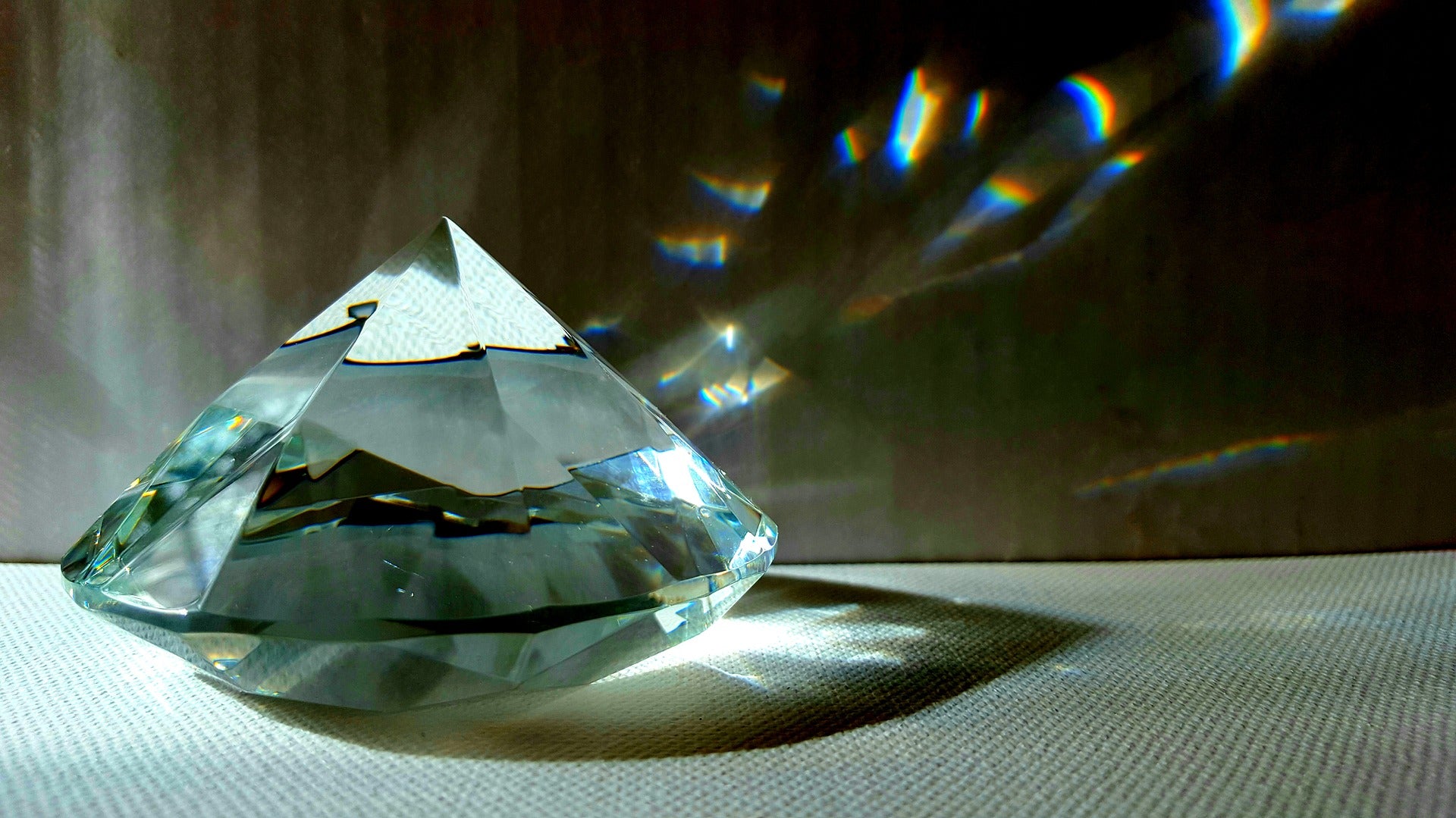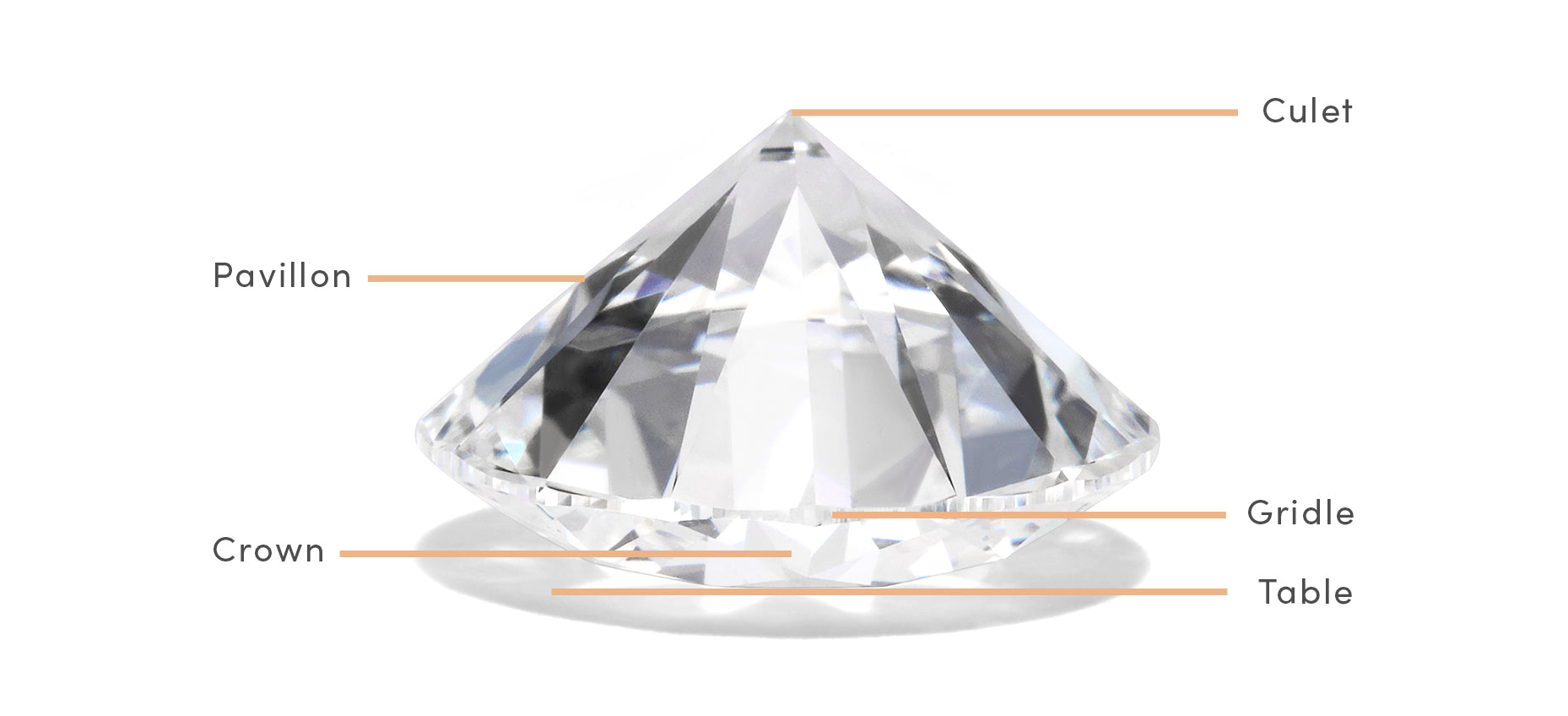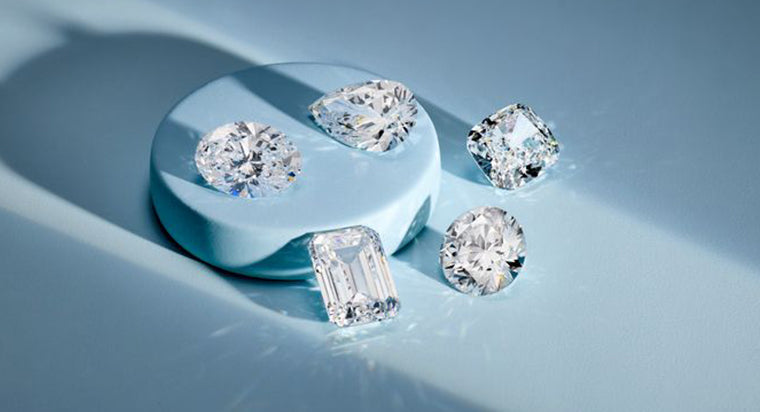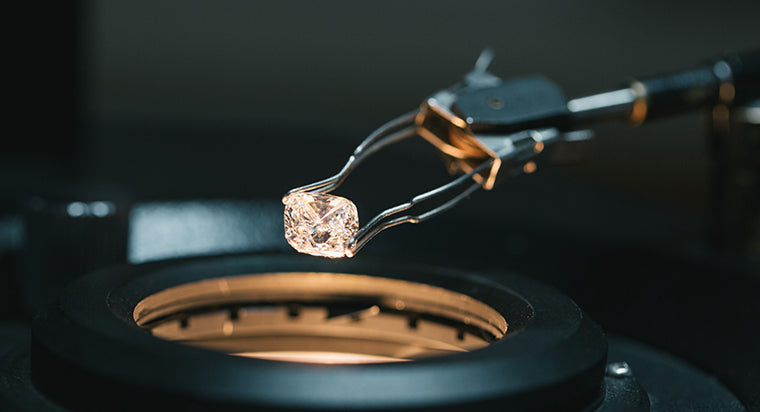Lab Diamond Cut

Lab cut diamonds are grown inside cutting edge laboratories - in an environment designed to replicate the earth's crust. This results in lab grown or man made diamonds that are almost identical to natural gems. In fact, they have the same chemical, physical, and optical properties, and only gemologists can confidently tell them apart!
TABLE OF CONTENTS
What is a Diamond Cut?
The diamond cut relates to the design or style applied to the diamond prior to polishing. Do not confuse the cut with the shape of the diamond. The cut relates to the polish and proportion of the diamond e.g. how symmetrical it is. We can sum this up in a nutshell - the better the cut, the better the luminosity.
The Process - From Rough Stone to Stunning Diamond

Have you ever heard of the saying, “a diamond in the rough?” A diamond starts out as rough stone - it's the cut and polish that transforms it into a faceted gem. The cut and polish are achieved via a five-step process:
- Plan: Planning takes time, but it is worthwhile to ensure the diamond is finished to a high-class standard and looks great.
- Cleave: Next is the sawing and cleaving process. The rough stone is split to enable the cutter better access. The cutter can use mechanical sawing or cutting lasers to achieve the desired effect.
- Brut: Following cleaving, there's bruting (sometimes called girding)--this is carried out to round off the edges of the rough stones. To achieve this, diamonds are placed opposite each other on a spinning axle, causing the gems to grind against one another.
- Polish: Next up is the creation of diamond facets. The rough stone is held in place while a rotating wheel polishes it. The polishing results in the reflective and smooth surfaces we associate with diamonds. Polishing incorporates two processes - blocking and “brillianteering.”
- Inspect: Finally, there's the inspection process where the diamond is thoroughly checked over to ensure it meets all manufacturing requirements. Needless to say, high quality should come as standard.
What Determines a Diamond's Sparkle?
Diamonds are synonymous with sparkle - this comes from the structure of the gem and the way the facets are constructed. The facets (flat surfaces) of the diamond resemble mirrors – absorbing the light and showcasing that dazzle we associated with a “brilliant” diamond.

Reflection
Diamonds achieve their luminosity from light reflection, light refraction, and light dispersion. Reflection relates to light that bounces back from the diamond - providing a real shine.

Refraction
Whereas, refraction relates to light filtering through the top of the diamond, angling itself around the interior of the diamond and then heading back out again. Finally, there's light dispersion - this refers to white light entering the diamond then splitting to create a rainbow effect. This is often known as “diamond fire.” To really display a diamond ring's fire, we recommend going with a lab grown diamond solitaire ring.
Diamond Shapes Explained
There are a plethora of diamond shapes - let's explore a handful of the most popular:
- Asscher Cut: Similar to a square emerald cut but with bigger step facets, a higher crown, and a smaller table.
- Cushion Cut: A combination of the round brilliance cut and a princess cut. The cushion cut lab created diamond has softer edges and resembles a cushion (hence the name)!
- Princess Cut: Strong on angles, this cut is considered to be contemporary in its design.
- Emerald Cut: Diamond rings benefit from the timeless emerald cut, as does other exquisite jewelry. This cut has fewer facets than brilliant cut diamonds. Furthermore, is similar to an Asscher cut because it is also classified as a step cut.
Diamond Finish: Polish, Symmetry, and Facets
Polish
The finish is all-important. Diamonds should have a smooth, glassy surface. The polish should be as seamless as possible - the gem will be examined for polish marks (small imperfections that may affect the grading of the gem).
Symmetry
Diamonds are also examined for symmetry, which relates to the alignment and conformity of the diamond facets. A gemologist will explore the shape and size of facets. The diamond may have been created with a step cut (featuring a square or rectangular shape and with parallel facets).

Diamonds aren't always perfectly symmetrical, sometimes they are cut to diminish inclusions or maintain the desired weight. Symmetry is checked via magnification (x10) and is rated from poor to excellent.
Pricing Effect: How Does the Cut Grade Affect Pricing?
The grade of the cut can have a big impact on its price. The brilliant round cut is considered to be one of the most expensive. This popular cut has numerous facets, and these generally require lots of detailed work. The cutters need to cut the rough stone right down to produce the brilliant round (unfortunately that leads to more waste).
Diamond Components

- Diameter: Width (edge to edge) of polished stone.
- Table: Largest polished facet situated at the top of the diamond. A larger table can make a diamond look larger because the reflection could be greater.
- Crown: The top part of a diamond extending from table to girdle. The crown consists of different facets: bezel, star, upper girdle, and a table facet.
- Girdle: The wide edge where the crown and pavilion meet.
- Pavilion: The bottom part - from the girdle down to the culet.
- Depth: The total height of a diamond measured from the table to the culet. Depth is significant when determining a diamond's cut grade. A depth between 59% to 62.9% is ideal.
- Culet: The small, pointed facet at the bottom of the diamond. The culet closes off the diamond's faceting in the bottom-center, in order for the light to bounce around inside the diamond, and reflect back.
Before purchasing a diamond, make sure that you consider your options. There are so many choices - whether you opt for lab grown diamonds emerald cut, an Asscher cut lab diamond, or a cushion cut lab diamond, we're sure you will find a beautiful diamond to suit.
FAQs
What is a diamond cut?
How is a diamond cut?
What determines a diamond's sparkle?
What are some of the most popular diamond shapes?
How does the cut of a diamond affect its price?








